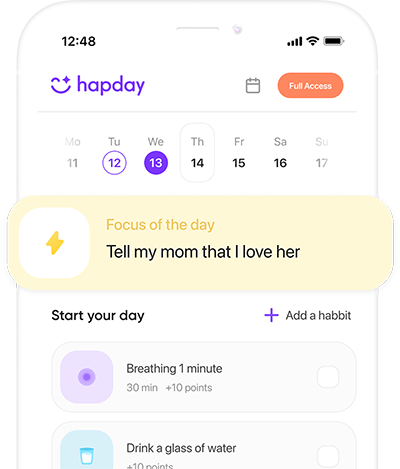Alright, let’s talk burnout. It’s not just some buzzword flying around in the media – it’s a real, exhausting state hitting hard on emotional, physical, and mental fronts due to relentless stress. Picture this: the Gallup Organization did a study back in 2021 that revealed a staggering figure—around 76% of employees feel the weight of burnout at least sometimes, and a concerning 28% experience it “very often” or even “always.” Kinda wild, right? But it’s a truth that seems to hit Gen Z and Millennials hardest because they’re usually juggling a mess of roles, from career to studies, family commitments to social calendars. Knowing how to combat burnout isn’t just useful—it’s crucial for hanging onto our mental health and overall sanity.
Table of Contents
- Understanding Burnout
- Symptoms of Burnout
- The Science Behind Burnout
- The Burnout-Stress Connection
- Self-Care Strategies for Mental Health
- Incorporating Self-Care into Daily Life
- Conclusion
Understanding Burnout
So, what’s the deal with burnout? It’s like a three-headed beast: exhaustion, cynicism, and feeling less effective at work. And isn’t that a lovely combo? Often, it’s sparked by factors like overwhelming workloads, lack of control, or even feeling unappreciated. The World Health Organization chimes in saying burnout is an “occupational phenomenon” – but come on, it can creep into every nook and cranny of life, not just work.
Symptoms of Burnout
Burnout comes with a pretty hefty list of symptoms. It’s not just in your head; it hits the body and mind, rattling overall mental health. Here’s a glimpse at what it looks like:
- Chronic fatigue and insomnia: Constantly drained and can’t seem to get a decent night’s sleep.
- Impaired concentration and forgetfulness: Ever found yourself staring at the fridge, totally blanking on why you opened it?
- Increased illness: Your immune system’s waving the white flag—hello, frequent colds.
- Loss of appetite: Either forgetting to eat or sudden changes in eating habits.
- Anxiety and depression: Those nasty buddies creeping in more frequently.
- Detachment and isolation: Avoiding people and responsibilities like the plague.
- Poor performance: Work’s taking a hit because motivation’s out the window.
Recognizing these tell-tale signs is like the first clue in solving the mystery of burnout.
The Science Behind Burnout
Diving into the science, burnout doesn’t just mess with your peace of mind; it reshuffles things upstairs too. Back in 2016, a study waltzed into the journal Psychology & Health, showing that burnout tweaks the brain’s wiring, eerily similar to depression. The prefrontal cortex, the brain’s decision-making HQ, takes a hit, leaving cognitive abilities scrambling.
The Burnout-Stress Connection
Here’s where it gets tricky—stress and burnout are kind of like cousins but they aren’t quite the same. Stress? It’s all about overload—too much pressure, too many demands. Burnout’s the aftermath—the sinking feeling of emptiness, utterly drained of motivation, feeling like a shell of oneself. And if stress sets up camp for too long, burnout isn’t far behind, lurking with potential consequences like anxiety, depression, and chronic disorders. Not great to say the least.
Self-Care Strategies for Mental Health
Breaking free from burnout needs more than just a to-do list. We’re talking a intricate web of self-care and lifestyle makeovers. Here’s a rundown on strategies proven by research to combat burnout and give your mental health the boost it deserves:
1. Mindfulness and Meditation
You’ve probably heard it all before, but mindfulness—it’s more than just being “zen”. It’s about staying anchored to the present without casting any judgment. A 2017 study in Health Psychology Review said mindfulness cuts burnout symptoms down to size. Nice.
How to Practice Mindfulness
- Meditation: Just a few minutes a day focusing on breath, the body, what’s around.
- Mindful Breathing: Inhale, exhale…easy, right?
- Body Scan: Check in with your body and listen to what it’s saying.
2. Physical Activity
Let’s not sidestep the obvious: physical movement works wonders for stress and mood. According to the APA, exercise is like a natural “happy pill” for dealing with both anxiety and depression. Seriously!
Exercise Tips for Reducing Burnout
- Aerobic Exercise: Go for a run, hop on a bike—amp up your heart rate, let those endorphins do their thing.
- Strength Training: Adding some weights into the mix; surprisingly good for mental strength too.
- Yoga and Tai Chi: These practices tend to merge bodily movements, meditation, and breathing—a triple threat to stress!
3. Sleep Hygiene
Ahh, sleep. It’s the classic chicken-egg scenario with burnout. Poor sleep both a symptom and a culprit.
Strategies for Better Sleep
- Consistent Schedule: Hit the hay and rise at the same times daily.
- Sleep Environment: Keep things cozy and quiet; your bedroom’s your sanctuary.
- Limit Screen Time: Phones aren’t bedtime buddies—ditch ‘em an hour before you wind down.
4. Nutrition and Diet
Fuel your body, fuel your mind. The right foods can stabilize mood and provide the energy you need.
Nutritional Tips for Combatting Burnout
- Omega-3 Fatty Acids: Fish, flaxseeds, walnuts—brain food, simple as that.
- Whole Grains: Brown rice, oats—they keep blood sugar in check, deliver steady energy.
- Hydration: Water, folks! It keeps your mind sharp.
5. Social Support
Humans are social creatures – even those who hate talking to people. Building support networks combats stress like nothing else. Try it, okay?
Ways to Enhance Social Connections
- Quality Time: Hang out with folks who lift you up.
- Support Groups: Connect with those who get what you’re going through.
- Professional Help: Therapy or counseling? Sometimes, it might just be what the doctor ordered.
6. Professional Balance and Boundaries
Drawing clear lines between work and life is essential to prevent burnout. This means having clear-cut boundaries and managing workloads effectively.
Tips for Work-Life Balance
- Prioritize Tasks: Get the big stuff sorted first, and delegate when possible.
- Set Boundaries: Clearly define your work hours to maintain your sanity.
- Unplug: Those work emails? Ignore them during personal time—just breathe.
7. Creative Outlets
Creative pursuits aren’t just hobbies—they’re a way to reclaim joy and fend off burnout.
Creative Activities to Consider
- Art Therapy: Let drawings or paint be your guide—it’s surprisingly calming.
- Music: Listen, play, let music transport you.
- Writing: Pen something down whether it’s poetry or journaling—it’s cathartic.
Incorporating Self-Care into Daily Life
Creating a self-care routine isn’t an overnight job; it takes a bit of reflection and patience. Figure out what areas need some TLC and start from there. Integrate these tips into your daily grind and keep at it for the best outcomes.
Develop a Self-Care Plan
- Assess Your Needs

